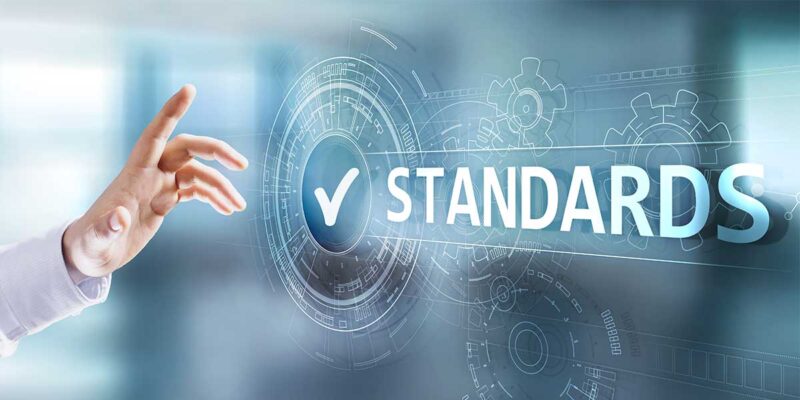Standards in Action
By Tim Kridel
Special to InfoComm International
 Don’t miss the standards event of the year during InfoComm 2016 in Las Vegas. The annual Standards Plenary will be held Tues., June 7, from 1-6 p.m. Learn more about InfoComm standards and how companies are using them today. Register now.
Don’t miss the standards event of the year during InfoComm 2016 in Las Vegas. The annual Standards Plenary will be held Tues., June 7, from 1-6 p.m. Learn more about InfoComm standards and how companies are using them today. Register now.
Since the beginning of the year, Electro Acoustics, a Texas-based APEx integrator, has been able to reduce the number of warranty callbacks by 41 percent. Besides increasing customer satisfaction, systems that work right the first time, every time, have freed Electro Acoustics staff to focus on other projects, which means more revenue for the company.
The secret? Electro Acoustics is using ANSI/INFOCOMM 10:2013, AV Systems Performance Verification, one of several standards that InfoComm International and dedicated volunteers have created over the past seven years. Such performance standards differ from technology standards, such as IEEE 802.11 or HDBaseT, because they provide a framework for setting expectations with clients and verifying outcomes. The AV Systems Performance Verification standard includes a 160-item checklist for ensuring an AV solution performs the way it’s supposed to.
“It’s not that we didn’t do good work before,” says Luke Jordan, CTS-I, Electro Acoustics’ Service and Small Systems Manager. “We just didn’t check our work against a standard. Once we starting doing that, we saw a huge decrease in work defects. The amount of time and money we spent fixing our own problems was greatly reduced.”
InfoComm standards take a holistic view of an AV system rather than focusing on individual components. For example, ANSI/INFOCOMM 3M-2011, Projected Image System Contrast Ratio (PISCR) takes into account ambient light in helping designers, integrators and technology managers determine standard contrast ratios for their projection systems because ambient light affects contrast ratio as much as the projector and screen. Such an approach helps clients and AV pros agree on how to assess the system’s user experience.
“In my experience using PISCR, I have found its main value has been to replace the traditional subjective sign off for projected images — ‘It’s not bright enough’ — with metrics that really work,” says Greg Jeffreys, Director and Chairman of Paradigm Audio Visual and a founding member of InfoComm’s Standards Steering Committee. “Designing a system to conform to PISCR gives a better result for the viewer time after time.”
With technology standards, as opposed to performance standards like InfoComm’s, a common challenge is interpretation. Some companies interpret them differently. That’s not the case with InfoComm’s performance standards.
“There’s not a lot of room for interpretation,” says Jason Antinori, CTS-D, Design Specialist at TELUS and a member of InfoComm’s Standards Steering Committee. “They’re meant to be implemented the way they’re documented.” However, he says, firms can tailor their implementation to reflect particular conditions, such as a room’s size.
“There’s nothing wrong with professionals adapting standards to specific project requirements, starting with the basic methodology and principles and then adapting them as needed,” Jeffreys says. “I feel strongly that standards are not there to replace an AV professional’s hard-earned experience, but are there as essential tools to help create exceptional user experiences.”
Why Standards?
There are many reasons why more AV professionals are embracing and using standards in their projects. Importantly, standards offer a way to ensure that everyone at the client and the AV firm is on the same page from day one. Such agreement eliminates finger pointing and change orders.
“It makes sure that customer needs are realistic and achievable, and that information gets passed along to system designers,” Jordan says. “Then we don’t find out later in the project that we’re missing critical components and end up with unhappy clients and systems that don’t work well.”
InfoComm standards typically are used for new installations, but they’re also useful for analyzing existing systems.
“We have measured problem rooms before and after refits to demonstrate the success of great new systems,” Jeffreys says. “More importantly, the principles of PISCR are used to evaluate under-performing rooms and to make adjustments that achieve significant improvement without spending a penny. PISCR’s significance is that it’s a driver to achieving great viewer experience in a practical way that underlines that you don’t necessarily need to throw money or technology at a system to achieve your objectives.”
Standards can be effective sales tools and help explain the rationale behind a design. Besides helping win a project, AV companies find that standards can also be useful in convincing clients to increase the budget by quantifying the improvement in user experience “There’s a U.K. company using the projected image standard as a way to get into a potential client by saying, ‘Let me check out your contrast ratio because here’s the standard,’” says Ann Brigida, InfoComm Director of Standards.
The first InfoComm standard, ANSI/INFOCOMM 1M-2009, Audio Coverage Uniformity in Enclosed Listener Areas, debuted in 2009. The rest of the current lineup includes:
- ANSI/INFOCOMM 2M-2010, Standard Guide for Audiovisual Systems Design and Coordination Processes
- ANSI/INFOCOMM 3M-2011, Projected Image System Contrast Ratio
- ANSI/INFOCOMM 4:2012, Audiovisual Systems Energy Management
- ANSI/INFOCOMM 10:2013, AV Systems Performance Verification
- ANSI/CEA/CEDIA/INFOCOMM J-STD-710, Audio, Video and Control Architectural Drawing Symbols
- INFOCOMM F501.01:2015, Cable Labeling for Audiovisual Systems
As their titles indicate, most InfoComm standards are approved by the American National Standards Institute, a private organization that administers and coordinates U.S standards. ANSI’s stamp of approval carries weight with clients.
“Having standards that are accredited by an agnostic national body of standards adds a level of credibility,” Antinori says. That was the case with one TELUS client, a financial institution at which the IT department was responsible for collaboration rooms.
“They came from a very standards-driven world,” Antinori says. “So right away, they were able to give more credit to our design than if we just showed up with an Excel workbook because it included standards. It helped us secure the business.”
Pro AV competes and coexists with IT and telecom, two industries whose use of standards goes back decades. Having its own set of ANSI-certified standards reflects pro AV’s status as a professional services industry, one with credibility in the eyes of CIOs, IT managers and other decision-makers. “It’s like looking for an electrician versus a handyman,” Antinori says. “You hire an electrician to do work that needs to be done by code and responsibly. You call a handyman to paint a wall.”
Putting Them to Use
One common misconception among AV professionals may be that standards are difficult to understand and use. Not so.
“The minute people hear ‘standards,’ they think of a document that’s too hard to read or too hard to implement,” Brigida says. “We performed standards usage and awareness surveys in 2015 and 2014. Consistently, people said that one of the major things they liked about InfoComm standards was that they’re easy to read and understand.”
Antinori agrees. “Don’t be afraid,” he says. “‘Standards’ sounds daunting or legislative, but there are a lot of benefits to at least understanding them and knowing when it makes strategic sense to reinforce something you’re already doing through standards.”
The message seems to be getting through: In InfoComm’s 2015 standards survey, 41 percent of respondents had downloaded at least one. And 98 percent who’ve accessed a standard said they would recommend InfoComm standards to industry colleagues. Companies are realizing that adopting standards can put them at a competitive advantage in the market, but they also understand that to maximize their benefits, an entire organization must understand their value.
“It requires a paradigm shift of the entire organization, not just one or two people,” Jordan says. “It takes buy-in from the people doing the work and those working with the clients. It took us a few years to build up momentum. Now, instead of people asking why we do things a new way or worrying that it takes more time, they are fully on board. That’s when you start to see a 41 percent reduction in defects. And that’s when you start to see efficiency go up.”
This column was reprinted with permission from InfoComm International and originally appeared here.





